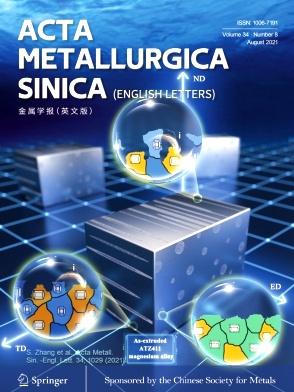Understanding the Mechanism for the In-Plane Yielding Anisotropy of a Hot-Rolled Zirconium Plate
Abstract
Previously, the in-plane mechanical anisotropy of Zr hot-rolled plates is ascribed mainly to the different activities of the deformation modes activated when loading along different directions. In this work, a quantitative study on the deformation behavior of a pure Zr hot-rolled plate under tension along the rolling direction (RD) and transverse direction (TD) reveals that both the activities of deformation modes and the anisotropy of grain boundary strengthening account for a tensile yield strength anisotropy along the TD and RD. Crystal plasticity simulations using viso-plastic self-consistent model show that prismatic slip is the predominant deformation mode for tension along the RD (RD-tension), while prismatic slip and basal slip are co-dominant deformation modes under tension along the TD (TD-tension). A low fraction of \(\left\{10\bar{1}2\right\}\) twinning is also activated under TD-tension, while hardly activated under RD-tension. The activation of basal slip with a much higher critical resolve shear stress under TD-tension contributes to a higher yield strength along the TD than along the RD. The grain boundary strengthening effect under tension along the TD and RD were compared by calculating the activation stress difference (\(\Delta {\text{Stress}}\)) and the geometric compatibility factor (\({m}^{\prime}\)) between neighboring grains. The results indicate a higher grain boundary strengthening for TD-tension than that for RD-tension, which will lead to a higher yield strength along the TD. That is, the anisotropy of grain boundary strengthening between TD-tension and RD-tension also plays an important role in the in-plane anisotropy along the RD and TD. Afterward, the reasons for why there is a grain-boundary-strengthening anisotropy along the TD and RD were discussed.


 求助内容:
求助内容: 应助结果提醒方式:
应助结果提醒方式:


